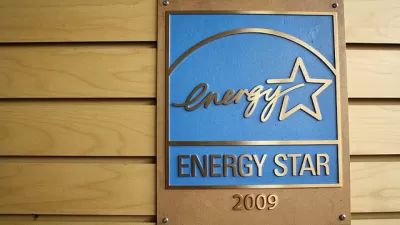From Boston to Austin to L.A., more and more cities across the U.S. are making efforts to reduce their carbon emissions and environmental impact by instituting green building codes.
"Up to now, state and local governments have viewed green buildings as trophy properties, intended to make showy, if piecemeal, statements of environmental awareness. They built green city halls (Austin, Texas), green high schools (Ft. Collins, Colorado) and green libraries (Fayetteville, Arkansas), among other civic structures. Boston's experience regulating private-sector construction suggests that municipalities can push the green-building movement further and faster, by burrowing its principles into the mundane details of their building codes."
"More cities have followed suit. Last April, Los Angeles became the largest city in the nation to adopt green mandates for the private sector. Then in August, San Francisco adopted the strictest codes of any U.S. city so far, requiring green construction for any residential building taller than 75 feet and any commercial building of more than 5,000 square feet. Washington, D.C.'s law takes effect in 2012. Each city is mandating green building in slightly different ways, but all of them have settled on the U.S. Green Building Council's well-known "LEED" certification as the standard for what it means to be green."
"Nationwide, buildings account for 72 percent of electricity consumption. Depending on how that power is made, buildings can account for anywhere from 30 percent to 70 percent of a city's carbon dioxide emissions."
"Indeed, as mayors set out to translate lofty climate-change goals into real reductions of greenhouse-gas emissions, they'll quickly find they have no choice but to scrub the whole skyline clean."
FULL STORY: Code Green

Alabama: Trump Terminates Settlements for Black Communities Harmed By Raw Sewage
Trump deemed the landmark civil rights agreement “illegal DEI and environmental justice policy.”

Study: Maui’s Plan to Convert Vacation Rentals to Long-Term Housing Could Cause Nearly $1 Billion Economic Loss
The plan would reduce visitor accommodation by 25% resulting in 1,900 jobs lost.

Planetizen Federal Action Tracker
A weekly monitor of how Trump’s orders and actions are impacting planners and planning in America.

Restoring Northern India’s Himalayan ‘Water Temples’
Thousands of centuries-old buildings protect the region’s natural springs and serve as community wells and gathering places.

Milwaukee to Double Bike Share Stations
Bublr Bikes, one of the nation’s most successful, will add 500 new e-bikes to its system.

DC Extends Application Window for Outdoor Dining Permits
District restaurants will have until the end of November to apply, but businesses with permits in rush hour parking lanes must end operations on July 31.
Urban Design for Planners 1: Software Tools
This six-course series explores essential urban design concepts using open source software and equips planners with the tools they need to participate fully in the urban design process.
Planning for Universal Design
Learn the tools for implementing Universal Design in planning regulations.
Caltrans
Smith Gee Studio
Institute for Housing and Urban Development Studies (IHS)
City of Grandview
Harvard GSD Executive Education
Toledo-Lucas County Plan Commissions
Salt Lake City
NYU Wagner Graduate School of Public Service



























